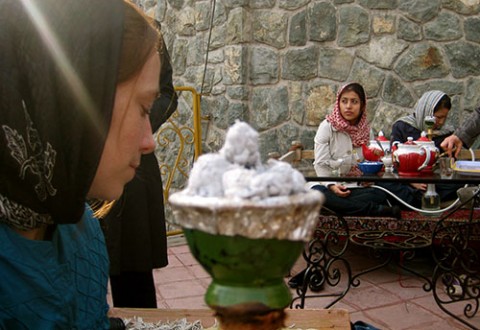El 29 de noviembre de 1947, la resolución 181 de la Asamblea General acordaba partir el territorio de Palestina en dos estados, uno judío y otro árabe, aunado a un régimen de administración internacional. Hoy y después de 65 años, el mismo día 29 de noviembre, se ha aprobado la resolución que reconoce a Palestina como un Estado no miembro de Naciones Unidas donde 138 naciones votaron a favor mientras 9 lo hicieron en contra junto con 41 abstenciones. México votó a favor, y se suma a un acontecimiento histórico que reúne la buena voluntad de la gran mayoría de las naciones pertenecientes a la comunidad internacional.
De acuerdo con Naxalli Calderón, gran conocedora del tema palestino, "se trata de un triunfo político para Abu Mazen (Mahmoud Abbas) quien había perdido un considerable apoyo interno y social dada la condición económica de Cisjordania ante la administración de la Autoridad Nacional Palestina". Lejos del simbolismo que representa este hecho, y de la posibilidad de que los palestinos puedan acudir a instancias como la Corte Penal Internacional para juzgar casos de crímenes de guerra, el reconocimiento de Palestina como Estado observador en la ONU es sin duda un triunfo político para al Fatah que permite comenzar a ver un panorama óptimo donde relanzar la reconciliación nacional con Hamas que, por cierto, habiendo salido reforzada socialmente tras la pasada crisis en Gaza, ha apoyado la posición política de Abbas en la ONU con miras a una reconciliación política que sin duda será impulsada por un Egipto hambriento de protagonismo regional.
Aunado a lo anterior, Calderón también señala que debemos tener en mente la posición de la comunidad internacional, principalmente la posición europea, ante este hecho histórico: "para Europa, esto también es una oportunidad vital dados los votos a favor de países como España y la abstención histórica de Alemania que legitiman la posición palestina ante la búsqueda de la paz". Basta escuchar el discurso del representante alemán quien abogó por un futuro acuerdo de paz entre ambos estados, lanzando señales de un avance político muy significativo de su país que históricamente se había negado a votar cualquier solución que afectará sus intereses con Israel. Esta nueva posición alemana es más coherente con los proyectos mediterráneos de desarrollo de la Unión Europea que, a pesar de ir a la Asamblea General sin una posición común como bloque regional, ha coadyuvado a impulsar un cambio de tono en la escena multilateral.
Por otra parte, es de notar también que hoy se exhumó la tumba de Abu Omar (Yasser Arafat) para investigar la sospecha de envenenamiento por polonio-210, con lo que la temperatura política en Palestina ha subido de tono al ver que la mayoría de los países de la comunidad internacional tendrá que lidiar con este asunto viendo a Israel y a Palestina ya como Estados ante el derecho internacional con las puertas de la Corte Penal Internacional abiertas.
Lo anterior se relaciona con una noticia que cae con todo su peso político en la región: Ehud Barak, el arquitecto del complejo militar israelí, se retira de la política oficialmente a sus 70 años. Él fue el hombre que desconocía a todo interlocutor palestino (ya que decía que no existía) y el principal promotor de la aniquilación palestina en las últimas tres décadas. Lo anterior no quiere decir que Israel dará la bienvenida al nuevo Estado Palestino pues, por el contrario, se negará a reconocerlo y promoverá una nueva serie de operaciones políticas e incluso militares que coadyuven a fomentar la división entre Fatah y Hamas, división que el pueblo palestino anhela terminar de una vez por todas. Ejemplo de lo anterior será la construcción de nuevos asentamientos en Cisjordania que sin duda serán todo un reto para la construcción de la paz después de lo acontecido en la ONU.
Veamos qué pasa en los próximos meses y esperemos las reacciones de los actores políticos palestinos. Mientras tanto, la reacción del pueblo no se ha dejado esperar en las calles de Ramala, Gaza y Jerusalén donde ya se festeja este acontecimiento histórico que puede ser visto, aunque para muchos no lo sea, como el primer cambio significativo "en el terreno", un cambio de muchos otros que pueden venir.
Veamos qué pasa en los próximos meses y esperemos las reacciones de los actores políticos palestinos. Mientras tanto, la reacción del pueblo no se ha dejado esperar en las calles de Ramala, Gaza y Jerusalén donde ya se festeja este acontecimiento histórico que puede ser visto, aunque para muchos no lo sea, como el primer cambio significativo "en el terreno", un cambio de muchos otros que pueden venir.





